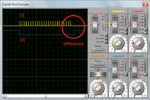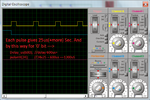bkar
Junior Member level 3

Dear All,
I am new in using micro controller.
I wanted to build a transmitter & receiver by using 12F675 PIC IC and mikroC compiler for programming.
Here is my code for TRANSMITTER.
//***********************************************************************//
//********************************************************************//
Here is my code for RECEIVER.
//********************************************************************//
//***********************************************************************
Please help me here!
I am new in using micro controller.
I wanted to build a transmitter & receiver by using 12F675 PIC IC and mikroC compiler for programming.
Here is my code for TRANSMITTER.
//***********************************************************************//
Code C - [expand]
//********************************************************************//
Here is my code for RECEIVER.
//********************************************************************//
Code C - [expand]
//***********************************************************************
Please help me here!
Attachments
Last edited by a moderator:





